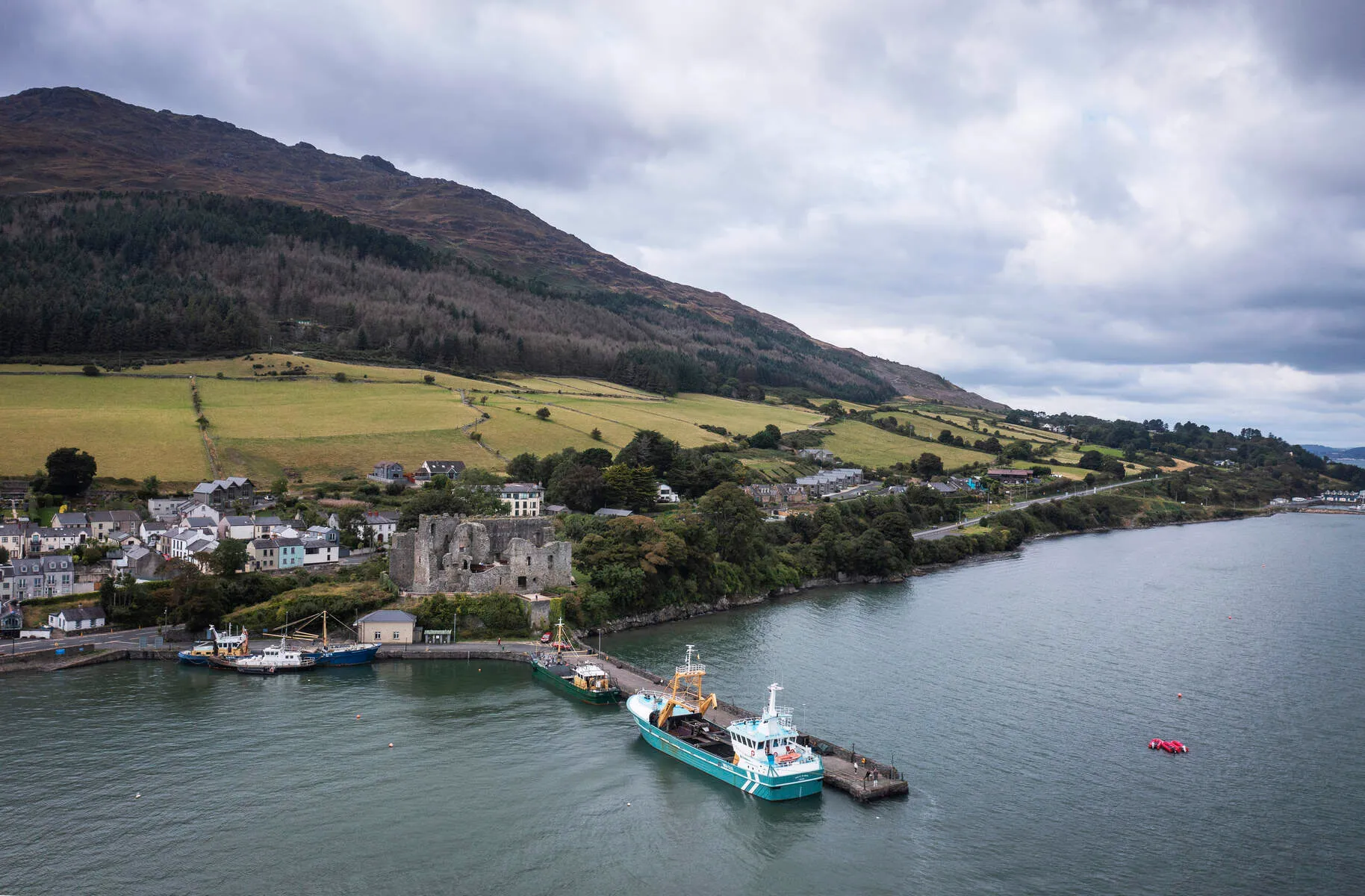Carlingford, County Louth's medieval jewel, straddles time where the Cooley Mountains kiss the shimmering waters of Carlingford Lough. This ancient town - halfway between Belfast and Dublin - is a living tapestry woven from Viking longships, Norman castles, and echoes of Cú Chulainn's epic battles from the Táin Bó Cúailnge. Stroll cobbled lanes past King John's Castle, its crumbling walls still whispering 13th-century secrets, while the Proleek Dolmen stands sentinel over millennia, its stone arch a testament to Neolithic ingenuity. Across the lough, County Down's Mourne Mountains rise like sentinels, their slopes mirrored in waters that birth some of Ireland's finest oysters - celebrated annually at August's raucous festival where locals and visitors alike shuck shells and sing rebel songs under the stars.
Step beyond Carlingford's medieval gates and the adventure unfolds. Hike Slieve Foye's rugged peaks for panoramic views where land and sea meet, or paddle a kayak through wetlands teeming with Brent geese. The Táin Way trail lures hikers to retrace mythic footsteps along the Cooley Peninsula, while the Adventure Centre offers zip-lining over forests and ropes courses that thrill even the bravest. By night, savor fresh catches at harborfront pubs or sample craft whiskeys in the flickering glow of Ghan House's historic ballroom. Whether you're tracing prehistoric footprints or dancing to fiddle tunes at a crossroads of history, Carlingford cradles Ireland's soul in every stone, wave, and whisper.
Jump to section:
Things to See and Do

Proleek Dolmen
A Neolithic portal tomb dating back over 5,000 years, part of Ireland's Ancient East. Its massive capstone balanced on upright stones showcases prehistoric engineering prowess.
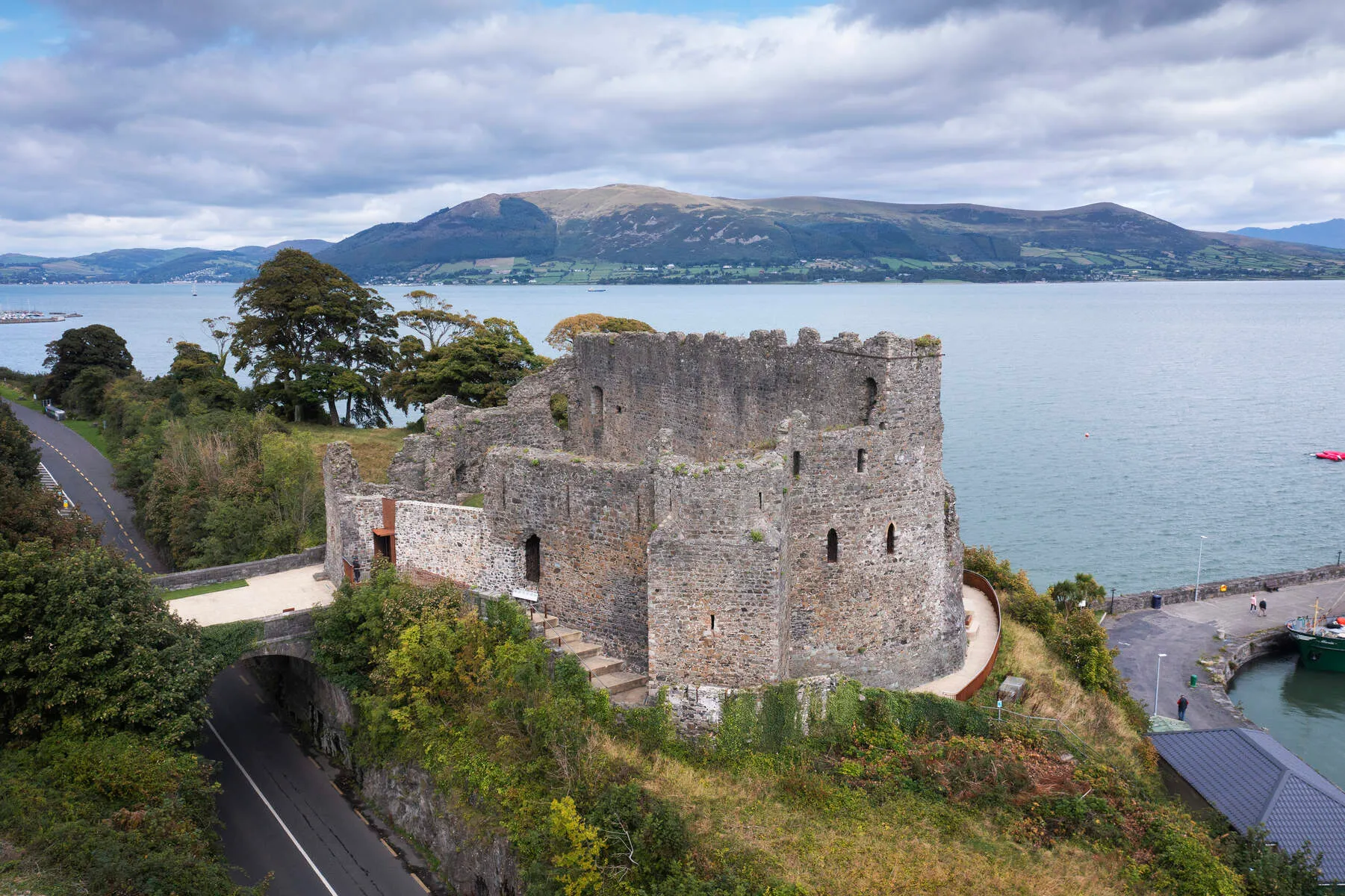
King John's Castle
A 12th-century Norman fortress built around 1186 and expanded through the 13th–16th centuries. Offers dramatic views of Carlingford Lough from its ruined walls, though entry is restricted for safety.
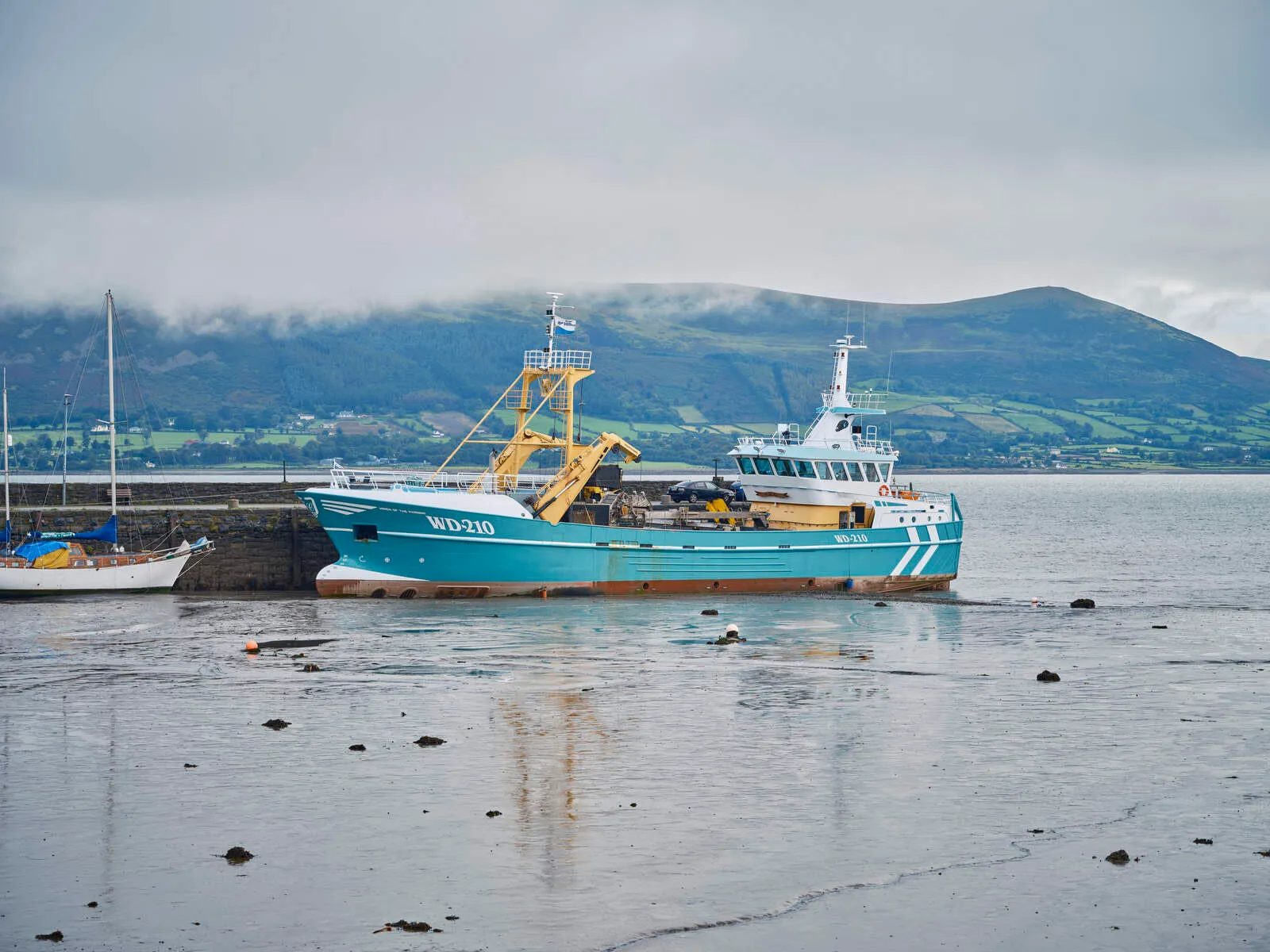
Carlingford Lough
A glacial fjord designated as a Ramsar wetland, offering oyster harvesting (annual festival in August), ferry trips to Northern Ireland, and birdwatching for rare brent geese.
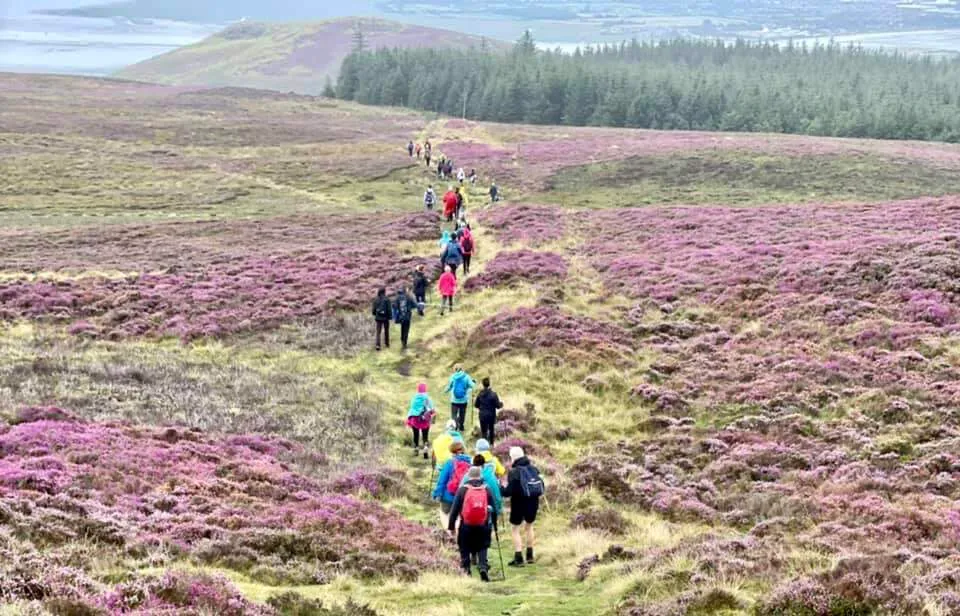
Cooley Mountains & Slieve Foy
The highest peak (588m) on the Cooley Peninsula offers hiking trails and panoramic views across Carlingford Lough to the Mourne Mountains. Associated with Fionn Mac Cumhaill legend.
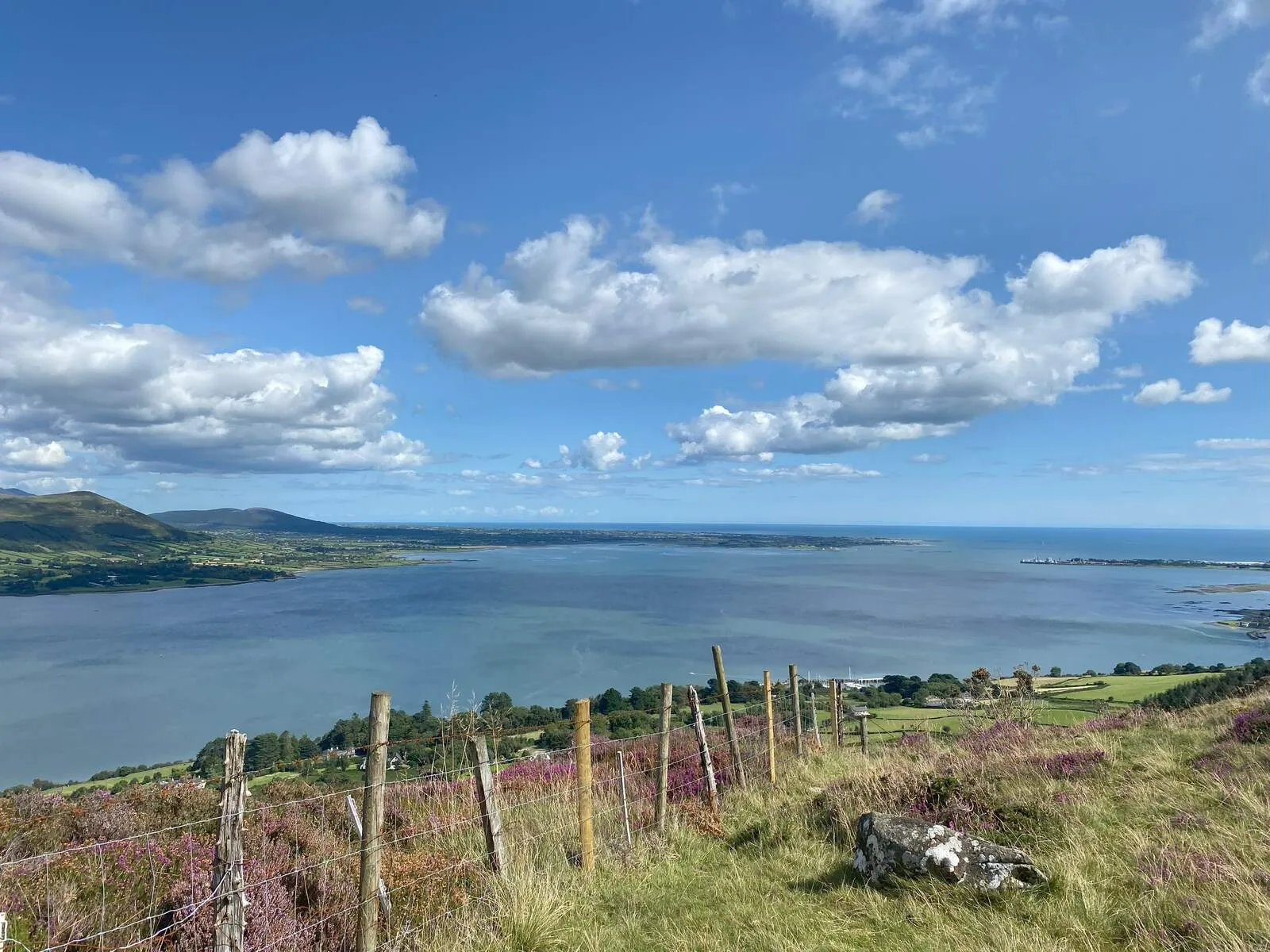
Táin Way Walking Trail
A 40km path following the Cooley Peninsula's ridges, linking Carlingford to Omeath. Walkers retrace Cú Chulainn's mythical journey with views of loughs and mountains.
Dominican Friary
Founded in 1305 and dissolved in 1540. Its nave and chancel ruins feature Gothic architecture, including a tower and traces of medieval cloisters.
The Mint
A fortified merchant house built in the 15th/16th century with ornate Celtic Revival windows. Likely named after Carlingford's brief 1407 coin-minting license, though it was never an actual mint.
Tholsel Town Gate
The only surviving medieval toll gate in Ireland, dating to the 14th century. Featured murder-holes (for dropping obstacles) and an 18th-century town gaol.
Clontygora Court Tomb
An early Neolithic court tomb offering insights into ancient burial practices. Part of a network of prehistoric sites in the Carlingford area.
Cooley Whiskey Tour
Guided tours at the historic Cooley Distillery (founded 1987) showcasing Irish whiskey-making traditions, with tastings of award-winning single malts and blends.
Carlingford Adventure Centre
Family-friendly activities including ziplining over forests, kayaking on Lough, and outdoor ropes courses. Operates in a lakeside setting since the early 2000s.
Taaffe's Castle
A two-phase fortified merchant house from the early 16th century. Features a trading depot and residential tower with murals hinting at its maritime trade history.
Holy Trinity Heritage Centre
Housed in a restored medieval church (founded c.13th century), this center exhibits Viking artifacts, 16th-century tax records, and Carlingford's maritime heritage through interactive displays.
Getting There
Air
There is no airport in Carlingford. The nearest international airport is Dublin Airport, approximately 90 km (56 miles) south of Carlingford.
Rail
The nearest train stations are:
-
Dundalk Train Station, approximately 27 km (17 miles) southwest of Carlingford, with trains from Dublin Connolly
-
Newry Train Station, approximately 20 km (12 miles) north of Carlingford, with trains from Belfast Grand Central and Dublin Connolly
Bus
Bus services to Carlingford include:
-
Bus Éireann route 161: operates Monday to Saturday, providing seven journeys to Dundalk via Greenore and four journeys to Newry via Omeath
-
Local Link Louth Meath Fingal route 701: operates on Sundays, providing three journeys to Dundalk and three journeys to Newry via Omeath
-
Bus Éireann route 100X: operates from Dublin to Carlingford with a change of bus in Dundalk, approximate travel time 2 hours
Car
Carlingford is accessible by car from:
-
Dublin: approximately 90 km (56 miles), 1 hour 15 minutes via the M1 motorway
-
Belfast: approximately 120 km (75 miles), 1 hour 30 minutes via the M1 motorway and A1
-
Dundalk: approximately 27 km (17 miles), 20-30 minutes via the R173 road
Ferry
A passenger ferry operates daily from Greenore, 5 km (3.1 miles) away, to Greencastle in County Down during the summer months, approximate travel time 20 minutes. The Carlingford Ferry connects Greenore Port in Co. Louth with Greencastle, Co. Down, with tickets starting from €4.00 for adults and cyclists, and €15.50 for vehicles including passengers.
Events & Festivals 2025
There are currently no events listed. If you would like to add an event, please contact us.
History
Carlingford's history began with Viking invasions in the 9th century, when they occupied Carlingford Lough, a naturally secure bay. The Vikings established a colony at Narrow Water, which is thought to have been the home of Isolde, daughter of a Viking chief. In the 12th century, Norman knight Hugh de Lacy laid the foundation stone for a castle on a strategic outcrop of rock, and a settlement sprang up close to this fortress.
The castle, known as King John's Castle, was visited by King John in 1210, and its construction was likely started around this time. Carlingford's strategic position on the east coast of Ireland made it an important trading port, leading to relative prosperity during the 14th, 15th, and early 16th centuries. The town received five charters, starting with one from Edward II in 1326 and ending with a charter by James I in 1619.
However, Carlingford's early prosperity was disrupted when the town was burnt to the ground by a Scots force under Sir William Douglas of Nithsdale in 1388. The town was rebuilt, but it faced further challenges during the 1641 Rising, the Cromwellian Conquest of 1649, and the subsequent Williamite wars of the 1690s. By 1744, Carlingford was in a state of ruin.
Despite its decline, Carlingford retains its medieval layout, with narrow lanes and small streets. The town is home to several historical sites, including King John's Castle, Taaffe's Castle, and the Tholsel, a 16th-century town gate that also served as a gaol. The Dominican Priory, established in 1305, was dissolved in 1540 by Henry VIII and later became the center of a repossession struggle between the Dominicans and Franciscans.
Carlingford's history is also marked by its association with important historical figures, such as Fionn Mac Cumhaill, who according to legend, faced the champions of Queen Medhbh's army at a ford near the town. The Cooley Mountains are said to be the burial site of Fionn Mac Cumhail's wolfhound Bran. In more recent times, Carlingford was a popular Victorian resort, with visitors drawn to its natural beauty and heritage.
The town's history is still visible in its architecture, with many buildings dating back to the medieval period. The Mint, a fortified three-storey townhouse, is one such example, although it is unlikely that it was actually used as a mint. Ghan House, a Georgian house built in 1727, features decorative ceiling plasterwork and castellated walls. The Church of the Holy Trinity, also known as the Holy Trinity Heritage Centre, exhibits the history of Carlingford from Viking times to the present day.
Carlingford has been home to several notable individuals, including Thomas D'Arcy McGee, a Canadian politician assassinated in 1868, and Daniel Joseph Anthony "Tony" Meehan, a musician and founder member of The Shadows. The town's history continues to be celebrated and explored through its many historical sites and landmarks.
